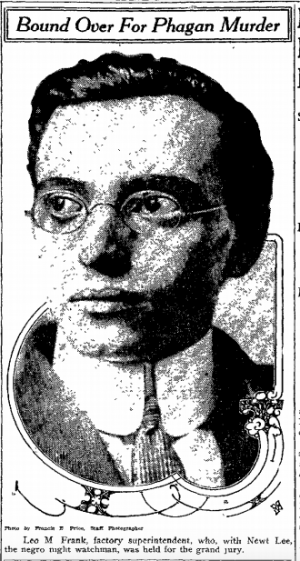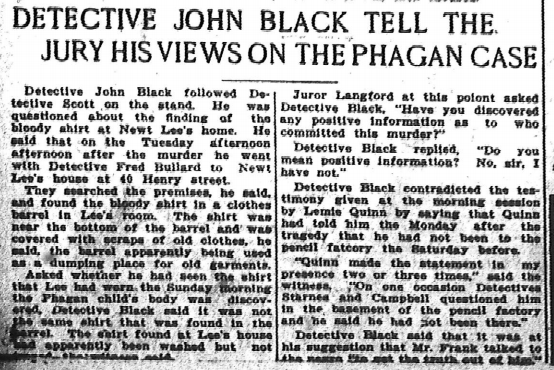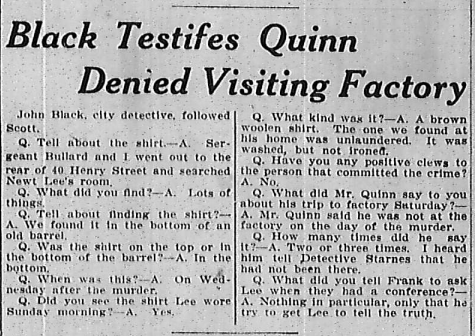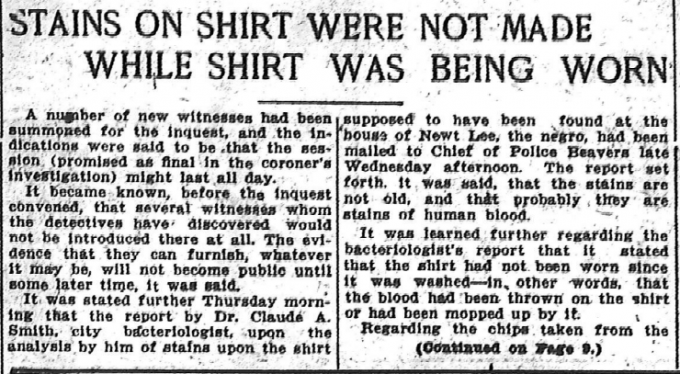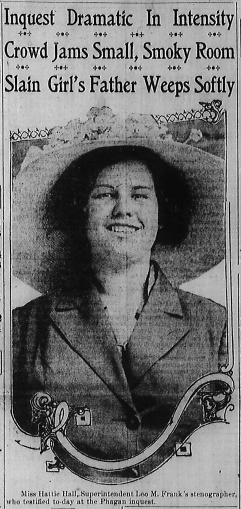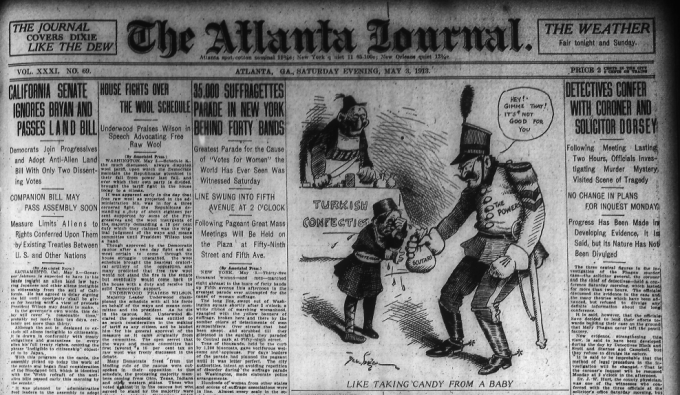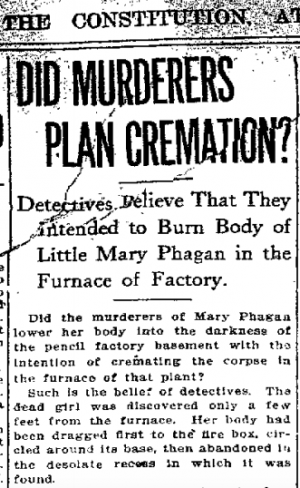 Another in our series of new transcriptions of contemporary articles on the Leo Frank case.
Another in our series of new transcriptions of contemporary articles on the Leo Frank case.
Atlanta Journal
Friday, May 9th, 1913
General satisfaction was expressed Friday morning by the detectives working on the Phagan case at the action of the coroner’s jury.
Chief of Detectives Lanford, however, declares that the work of his department is just now getting under way.
“We are going to continue right on with the investigation,” said the officials, “and try to dig down to the truth of this matter.”
“We have a theory as to who committed the crime, but we are ready to change it if we can possibly unearth any evidence, which will prove that theory wrong. We are going to make an impartial investigation and we are not going to leave anything undone, which might tend towards the solution of the mystery.
“My men will not be so pushed for time now and they can make systematic and deliberate investigation of every point of importance in the case, and they have much hard work before them. Even if nothing new develops, we have enough work outlined on the case to keep half a dozen men busy for the next week.”
Detectives Campbell, Starnes, Black, Bullard and Bass Rosser, who have been working on the case, are still detailed to the investigation.
* * *
Atlanta Journal, May 9th 1913, “Investigation Just Begun Says Detective Lanford,” Leo Frank case newspaper article series (Original PDF)

